Top 10 Things To Do In Great Smoky Mountains National Park
The Great Smoky Mountains extend along the border of Tennessee and North Carolina. It’s close proximity to multiple towns make it the most visited US National Park.
Despite the crowds, there are still plenty of things to do such as hiking through the luscious forests, splashing in the waterfalls, or standing at the edge of the most spectacular overlooks on the east coast.
Throughout the year, the mountains are blanketed in a smoke-like natural fog which gives the area its name.
In this article, we’re going to cover the top 10 things to do in Great Smoky Mountains National Park.
Great Smoky Mountains Top 10
- Dip Into The Newfound Gap
- Hike The Abrams Falls Trail
- Take A Scenic Drive Through Fall Foliage
- Visit A Historic Cabin
- Go Camping Cade’s Cove
- Walk The Roaring Fork Nature Trail
- Explore The Grotto Falls Trail
- Hike Part Of The Appalachian Trail
- Fontana Lake
- Climb Clingman’s Dome
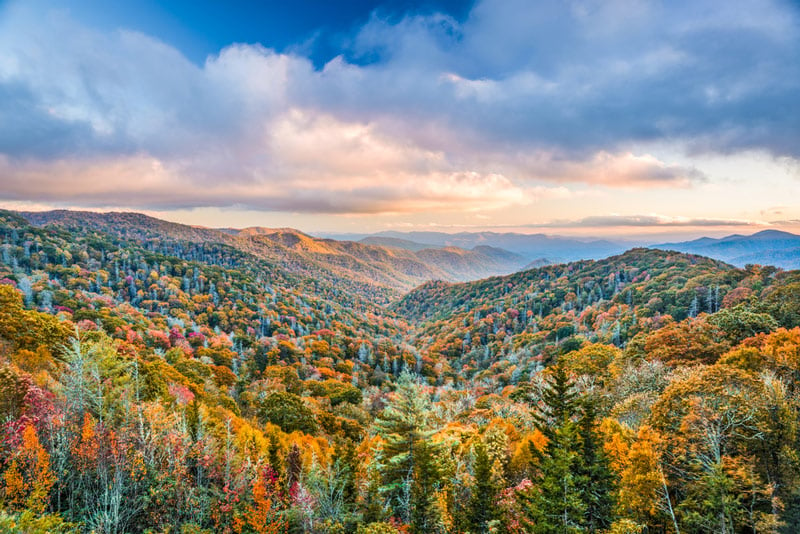
Dip Into The Newfound Gap
Located in the southernmost region of the Appalachian mountain chain, the Newfound Gap is the lowest pass within the Great Smoky Mountains National Park, sitting at 5,046 feet.
The dramatic shifts in the scenery as you travel through the pass are astonishing, with views of various forest ecosystems. As you climb up to 3,000 feet, differing trees from hardwoods to pine and oak to firs and evergreens can be seen. Depending on the time of year of your trip, you’ll have a higher likelihood of seeing snow in the Newfound Gap since it is much cooler than the surrounding area.
As you explore Newfound Gap, you’ll find beautiful scenic views from parking areas to allow for maximum nature emersion. Additionally, a portion of the Appalachian Trail crosses over Newfound Gap Road, so you can take a quick hike up and down the well-traveled trail.
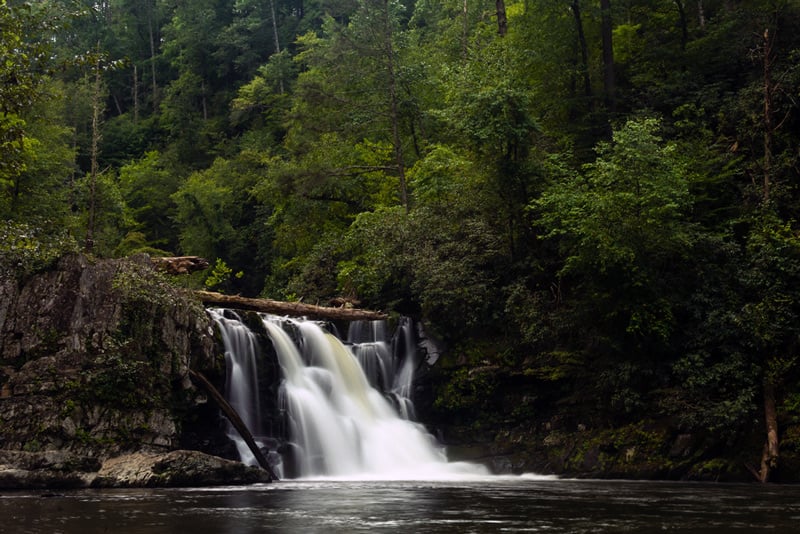
Hike The Abrams Falls Trail
Abrams Falls is a 20-foot high waterfall and the highlight of the Abrams Falls Trail. The waterfall has a large, deep pool of water at its base, perfect for cooling your feet after your hike up the trail. The hike itself is about five miles roundtrip, and most consider it to be moderately challenging.
Tourists can begin the hike at Abrams Falls Trail in Cades Cove. Usually, hikers take about four hours to hike to the waterfall and back to the trailhead.
Sturdy shoes are essential because some of the trails are slippery and rocky. The path to the waterfall also requires hikers to pass through three narrow bridges.
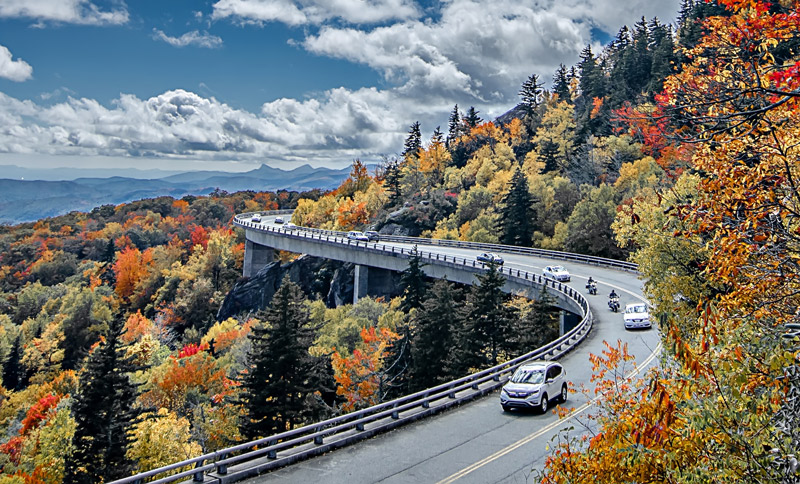
Take A Scenic Drive Through The Fall Foliage
Fall is a wonderful time to visit Great Smoky Mountains National Park. Over 100 species of trees are native to the area and each one changes to a unique shade of yellow, orange, red, or purple during autumn.
Several scenic drives and hikes are highly recommended during the fall months.
The Blue Ridge Parkway is one of the most famous routes. It travels 469 miles from Shenandoah National Park in Virginia all the way to the Entrance of Great Smoky Mountain National Park near Cherokee, North Carolina.
Along the way you can pull over to view one of the parks many overlooks or stop for a hike on one of its famous trails.
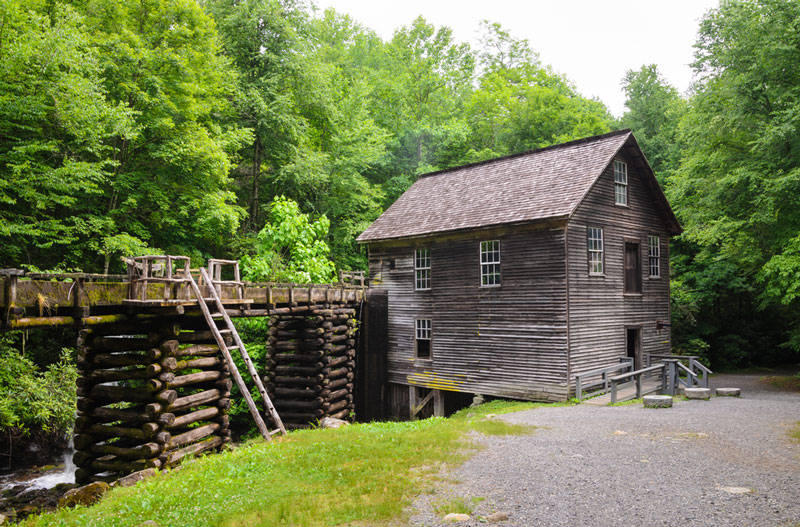
Visit a Historic Cabin
The Great Smoky Mountains are filled with preserved and historical cabins. The Walker Sisters’ Cabin is one of the most well-known. It is a two-story, three-room log cabin located near Five Sisters Cove. The cabin was constructed in the mid-1800s.
In 1926, many families were asked to leave their homes to build out the National Park; however, the six Walker sisters were allowed to live out the rest of their lives in the mountain cabin.
Once visitors began arriving, the sisters sold homemade items. By 1964, the last Walker sister passed, and the park assumed ownership of the land and cabin.
Additional cabins and historical cabins located within the National Park include The Little Greenbrier School, the Old Mill, and the Elkmont Ghost Town.
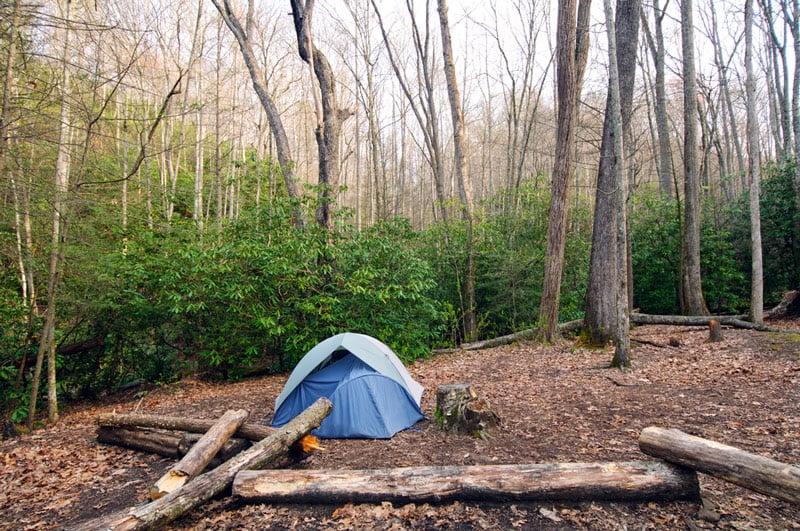
Go Camping In Cade’s Cove
Nestled in a valley surrounded by mountains, Cade’s Cove is one of the few campgrounds in the park that’s open year round.
This area of the Great Smoky Mountains offers some of the best chances to view local wildlife, including black bears, white-tailed deer, coyotes, groundhogs, turkeys, and other animals.
The campground is in a prime location for trout fishing in the nearby stream, or taking a hike up to Abram’s Falls which is situated nearby.
You’ll find many amenities in the Cade’s Cove campground including flush toilets, bike rentals, and a camp store.
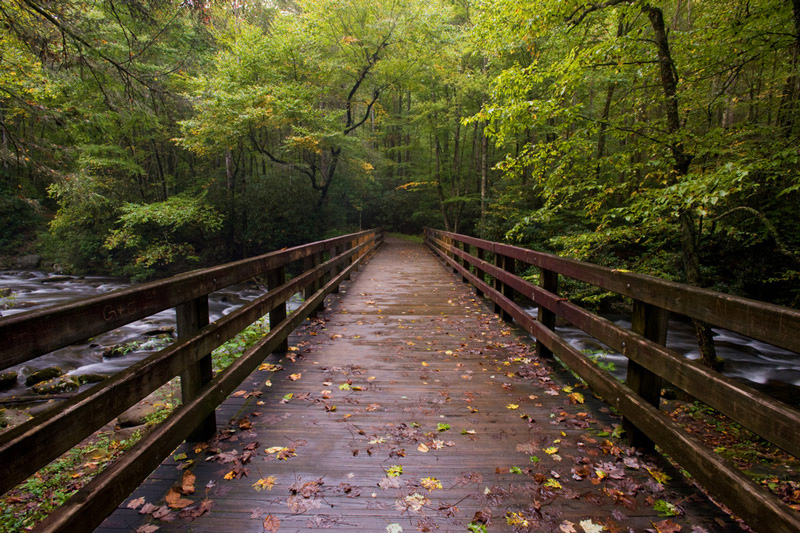
Walk The Roaring Fork Nature Trail
The Roaring Fork Nature Trail is renowned for wildflower viewing and beautiful historic buildings. It’s the perfect hiking destination for families and leisurely travlers.
Tourists will get an up-close view of the Roaring Fork stream which is a vast and fast-flowing mountain stream that is best viewed after heavy rain.
For those who prefer to drive, the Roaring Fork Motor Nature Trail is a one-way scenic drive stretching nearly six miles long. It offers glorious views of the forest, preserved log cabins and mills, as well as other historical buildings.
Before heading off on your drive, make sure to make a pitstop by the Noah “Bud” Ogle farmstead and take a hike on the trail to rainbow falls.
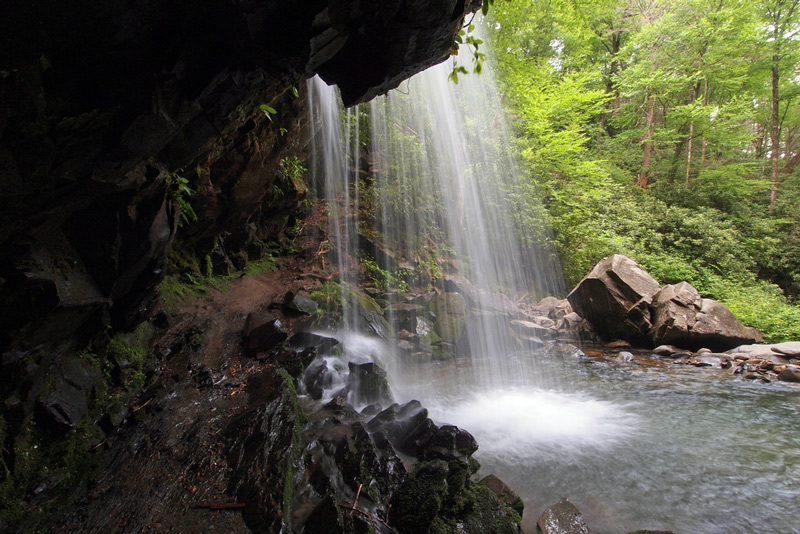
Explore The Grotto Falls Trail
The Grotto Falls and its trail are a part of the larger Trillium Gap Trail, which winds through an old hemlock forest. It can be accessed via the Roaring Fork Motor Nature trail.
The 3 mile round-trip hike zigzags through dense vegetation and nearby mountain streams. At the end, you’ll be rewarded with the spray of a 25-foot waterfall. One of the coolest parts about these particular falls is that you can walk behind the water and view it from every angle.
The entire return hike moves gradually downhill which makes for a comfortable trek back.
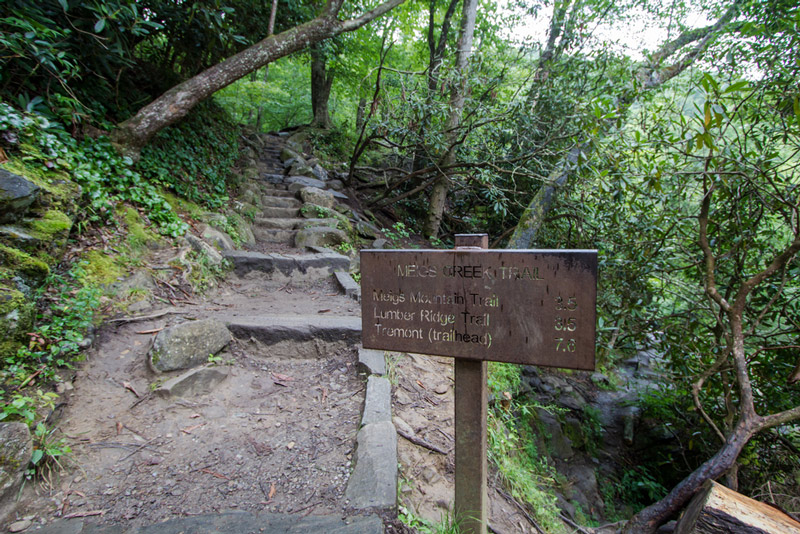
Hike Part Of The Appalachian Trail
71 miles of the Appalachian Trail pass through Great Smoky Mountains National Park including various landmarks like the Rocky Top, Charlies Bunion, and the stone fire tower on top of Mt. Cammerer.
For most backpackers, trekking the 71-mile portion of the Appalachian Trail takes about a week.
However, the hike can be completed in sections using trailheads at the Newfound Gap or Clingmans Dome, which note the endpoint and cut the length of the trip in half.
Those who walk the Appalachian Trail move forward by finding and walking alongside a series of “blazes,” which you can find typically painted on rocks, wooden posts, and trees.
The “blazes” are made with white paint and are two inches across and six inches tall. Blue blazes indicate side paths that take you to shelters or showers.
This part of the Appalachian Trail is well-traveled and an excellent opportunity for relatively new hikers to test their skills.
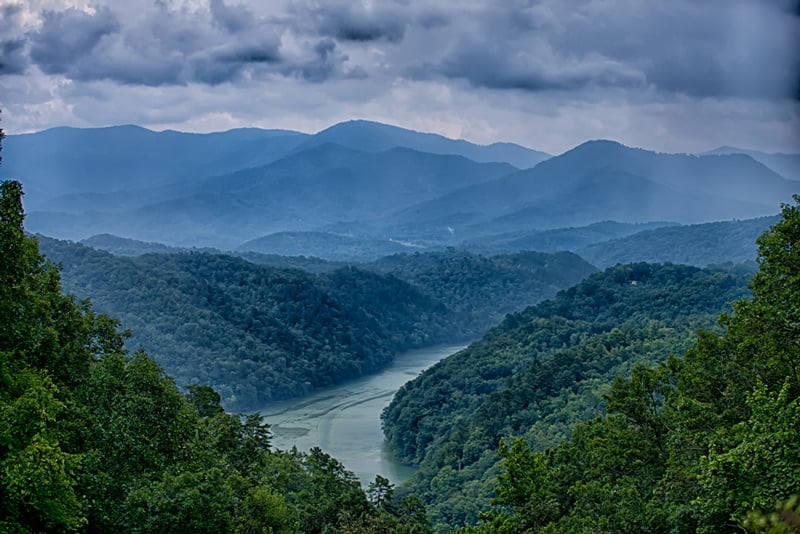
Go Fishing On Fontana Lake
Fontana Lake is a reservoir created by the Fontana Dam and forms part of the southern border of Great Smoky Mountains National Park.
The lake has many bays into coves as well as islands made from former mountain peaks. From the observation tower on Clingmans Dome, the lake can be seen nearly a mile below on a clear day.
During the summer, boating across Fontana Lake provides access to the most remote areas of the Great Smoky Mountains National Park, like Hazel Creek.
Water sports from kayaking to fishing are popular activities on Fontana Lake. In fact, some experienced fishermen claim that the smallmouth bass fishing is the best in the country at this lake.

Climb Clingmans Dome
The tallest peak in the Great Smoky Mountains National Park is Clingmans Dome. The observation tower located at the summit of Clingmans Dome offers panoramic views of the Smoky Mountains and further.
Notably, on clear days, the view from the top of the tower reaches as far as 100 miles.
While the Clingmans Dome Observation Tower is open all year, you might have trouble driving there depending on the season and the weather. In fact, the road leading to the tower usually closes between December and March.
In addition to the trail that leads directly to the summit, many other popular hikes begin on Clingmans Dome Road. Specifically, a portion of the Appalachian Trail runs across Clingmans Dome, and that point marks the tallest peak along the entire trail from Maine down to Georgia.
Plan Your Visit to the Great Smoky Mountains National Park
There are numerous reasons to visit the Great Smoky Mountain National Park. For outdoor lovers, hiking trails and offshoots of the Appalachian Trail are a significant draw.
For those who enjoy history, visiting preserved cabins and farmsteads offers insight into life and time in the distant past.
Aspiring zoologists will be interested in observing wildlife in their natural habitat, like bears, foxes, and sundry birds. Planning your visit to the Great Smoky Mountains National Park using these top ten adventures as a guide will lead to an incredible vacation.

This Post Has 0 Comments